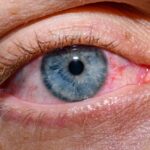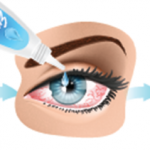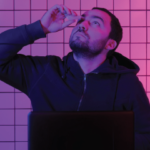 No medications have yet been approved by the U.S. Food & Drug Administration to treat Sjögren’s disease (SjD). So as rheumatologists, we are often challenged to think outside the box, and thinking outside of the box often means prescribing outside the box. But what’s the most thoughtful and effective way to do this? We can rely on clinical practice guidelines from the ACR and EULAR when available, review the available evidence (although the pickings are sometimes slim) and/or phone a friend.
No medications have yet been approved by the U.S. Food & Drug Administration to treat Sjögren’s disease (SjD). So as rheumatologists, we are often challenged to think outside the box, and thinking outside of the box often means prescribing outside the box. But what’s the most thoughtful and effective way to do this? We can rely on clinical practice guidelines from the ACR and EULAR when available, review the available evidence (although the pickings are sometimes slim) and/or phone a friend.
For this article, I phoned two friends, both of whom are SjD experts at the Penn Sjögren’s Center: Chadwick R. Johr, MD, associate professor of medicine and Dana DiRenzo, MD, MHS, assistant professor of medicine, both at the Perelman School of Medicine, University of Pennsylvania, Philadelphia. They provide a tips for navigating the therapeutic challenges of SjD.
Fatigue, Myalgia & Arthralgias
Fatigue remains one of the most debilitating and frustrating symptoms for patients with SjD, often rivaling dryness in its impact on quality of life.
Dr. Johr begins with a comprehensive assessment to identify modifiable and treatable contributors. “I rule out obstructive sleep apnea in patients for whom I have a suspicion (e.g., patients with obesity, snoring or morning headaches),” he says. “I think about restless leg syndrome as well because this impedes sleep and causes fatigue. I check ferritin levels and treat with iron supplements if ferritin is low—even if the patient isn’t anemic—because I’ve seen this help a lot of patients. I treat vitamin B12 deficiency and thyroid disease when present, and I evaluate for depression.”
Beyond modifiable contributors, Drs. Johr and DiRenzo both advocate for non-pharmacologic management techniques often used to treat people with fibromyalgia. “I focus on the four pillars of health: mental health, diet, exercise and sleep,” says Dr. DiRenzo.
As for medications, both Drs. Johr and DiRenzo sometimes prescribe low-dose naltrexone (LDN), despite the availability of limited trial data. LDN requires a compounding pharmacy, so the patient needs to have insurance that covers this. Dr. Johr notes, “It’s not evidence-based, yet many of my patients report real benefits, and a lot of physicians in SjD circles are using it.” Dr. DiRenzo echoes these sentiments, noting that a lot of her patients like it, too.
When it comes to hydroxychloroquine, Drs. Johr and DiRenzo differ in their approach. Dr. Johr will try it to see if it helps because it’s a relatively low-risk drug, especially when used for a six- to 12-month trial period, and some patients seem to truly benefit (as noted in a subgroup analysis, retrospective cohort data, and his own observations).1,2 Dr. DiRenzo, on the other hand, doesn’t use it since two clinical trials have shown a lack of benefit when it comes to fatigue or aches.3,4




